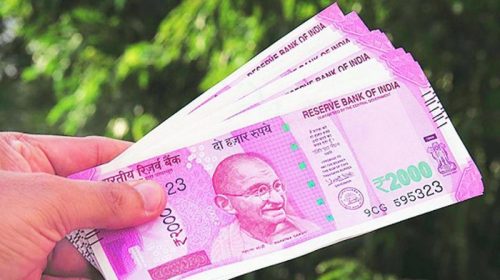-

How-COVID-19-Has-Impacted-Indian-Business-And-Economy
Humankind has faced diseases and pandemics since prehistoric times. Luckily our understanding of the causes of disease has improved along with our knowledge of treating the affected. All these have resulted in a drastic reduction in the number of deaths over the years and have changed our views on pandemics.
Being aware of the factors that incubate pandemics has led to faster development of the necessary measures for containment.
We all know the various measures for containing COVID-19, and these have been implemented and practiced throughout the globe. A question, however, has come up in these trying times, which is particularly relevant in the Indian context. COVID or economy – which is our priority? It is definitely not an easy question to answer.
Also Read: COVID-19 Challenges Faced By MSME
The extreme measures to fight COVID-19, like lockdown, may have had some impact in delaying the spread of the disease (flattening of the curve), but it has caused another severe problem –the economy is practically sinking and is on the brinks of collapse.
‘We may survive the pandemic but will undoubtedly die from hunger’ – is a cry increasingly heard across a large section of the people in India.
Bleak Scenario
With nearly 162 countries going into complete or partial lockdown, business across the globe is staring at the gloomy prospect of an impending collapse of the financial markets. A developing country like India is facing volatile market conditions in an environment of uncertainty. All sectors of the economy, investments, external trade, and private consumption, are severely impacted by the prevailing market conditions.
The COVID-19 pandemic has impacted the Indian economy more than it was anticipated in the early months of the disease. The International Monetary Fund(IMF) has projected a contraction or de-growth of the Indian economy in 2020 by a factor of -4.9%. The overall world scenario also represents a dismal picture with the global growth pegged at -4.9%. It is for the first time that all regions across the globe are projected to grow negatively.
Also Read: COVID-19 Relief Package For MSMEs Under Atmanirbhar Bharat Abhiyan
Macroeconomists specialized in assessing global trends and making forecasts are not sure of the time the economy will take for recovery.
For a majority of businesses in India, the slowdown resulting from COVID-19 is in the form of a fall in consumption, demand, disruptions in supply, and severe liquidity crunch.
The issue of the migrant workers (almost 100 million) became a major logistic problem with most of them located at scattered locations. Employed with the private and agricultural sector mainly, organizing transportation of this vast workforce to their native places amidst lockdown became a real challenge for the government.
Also Read: Top 10 Business Ideas After Lockdown
This problem will only accelerate in the future since the post-pandemic India will lead to a worker-shortage situation in many places, both for industry and agriculture. Unless this is tackled with proper planning, it will impact the recovery time of the Indian economy negatively. It is of utmost importance that this labor is adequately nurtured and motivated to join the rebuilding effort.
A look at few sectors of the economy
Table of Contents
Shifting the focus to the micro-level, let’s take stock of a few industries.
Travel and Tourism
We all know Tourism has been a focus area in India, and it generates over 9% of India’s GDP. The sector provides about 43 million jobs, representing over 8% of the country’s total employment.
Also Read: How To Manage The Shortage Of Credit During Lockdown?
COVID-19 has brought the entire sector to a close. With all the tourist attractions shut, one can well imagine the plight of the enormous value chain that tourism supports. From hotels, restaurants, agents, operators, railway, air, and road transport providers to guides and porters, a large number of people are stuck.
Moreover, experts believe, this sector will take a long hit. Because even in the post-pandemic era, , uncertainty and fear will linger in the minds of people,l preventing long-distance journies.
Also Read: Benefits To Borrowers From A Six-Month Moratorium On Payment Of EMIs
The Micro, Medium and Small-scale Industry
It is said that the Indian MSME sector is the backbone of the Indian economy contributing over 6% of the manufacturing GDP and almost 25% of the GDP from service activities. It is the second-largest provider of employment in India (after agriculture) accounting for about 120 million people. It also contributes to about 45% of overall exports by value, from India. It is apparent from these figures that SME’s have an essential role in the Indian economy. This sector also is severely impacted by COVID-19.
Governmental Intervention
The government has announced an economic package of about 10% of the GDP. The strategy is a combination of fiscal, monetary, and liquidity measures. The package also provides for a mixture of reforms, infrastructure building, and support to stressed business and direct cash benefit to the weaker section of the society.
Initiatives like collateral-free loans are expected to resume business activities which in turn will safeguard employment. The expansion of rural and agricultural schemes with the provision of direct money transfer is expected to generate demand from rural areas. Higher spending on long-term initiatives like roads, irrigation, and transportation is also likely to improve the economy by stimulating demand. Only time will tell us about the effectiveness of the entire initiative.
Through The Looking Glass: An Optimistic Future
The pandemic has demonstrated that technology-powered business models are sustainable and offer competitive advantages. The companies are sure to develop a model based on technology and digital capabilities.
We are witness to a new revolution in these COVIDtimes – technological transformations are happening all over the country, across sectors. Airports are becoming contactless, e-commerce is booming, and entertainment has a new avatar with over-the-top (OTT) platforms, teaching has evolved to online and many other changes.
Technology is responsible for the creation of entirely new business models across multiple areas. The post-pandemic period is expected to give a further flip to such initiatives.
Payments and financial services are increasingly shifting to digital modes. E-commerce business in daily necessities has seen a rapid increase facilitated by pre-payments and zero contact delivery, during the lockdown days. The convenience experienced by the customer in such transactions will turn out to be a demand and practice in the coming days.
The COVID-19 pandemic has led to a surge in home deliveries from daily necessities to ready-to-eat food. With fewer people willing to perform this activity, the sector is already experiencing a labor shortage. If such a demand-supply mismatch persists for long, technology solutions for the last–mile activity will emerge quickly.
This may negatively affect our economy since it will lead to job loss. It is for both businesses and the government to take up the issue appropriately. The benefits of technology that all of us have enjoyed in the lockdown in the education sector (online classes) will further propel improvements it areas of connectivity (better sound, visuals, interactive modes).
The pandemic has generated enormous demands for personal hygiene and the protective equipment market. Several MSME players, along with a few large ones are making the best use of the opportunity. It is expected that such demand will continue for at least a year so that the companies can plan their activities suitably.
Skill development should be a priority for the government if India hopes to recover from the pandemic ahead of others. Global demand is expected to come for workforce related to health care and other service sectors. But the present skill gap needs to be covered before India can make a strong bid for this opportunity.
Do we see a Light at the end of the tunnel?
All baseline projections about economic recovery are based on critical assumptions about the degree and extent of the pandemic. In economies where the decline of the infection rate is lower than the projections, a further hit to the surviving business will have a significant impact.
In its June 2020 World Economic Outlook report, however, the IMF has talked of a silver lining in the form of a 6% growth of the Indian economy and 5.4% global.
The phased unlocking process has provided much-needed relief to businesses both large and small. Industry awaits revival in consumption, which in terms of an economist is called discretionary and non-discretionary spending.
India is a vast country with high domestic consumption. Will the pent up demand give a boost to the economy in quarters 3 and 4 of the current fiscal year?
The GST collection (an indication of economic activities) in June ’20 was Rs 90917 crores, up from Rs 62000 as of May ’20 and just a 9% drop in comparison to June-19.






